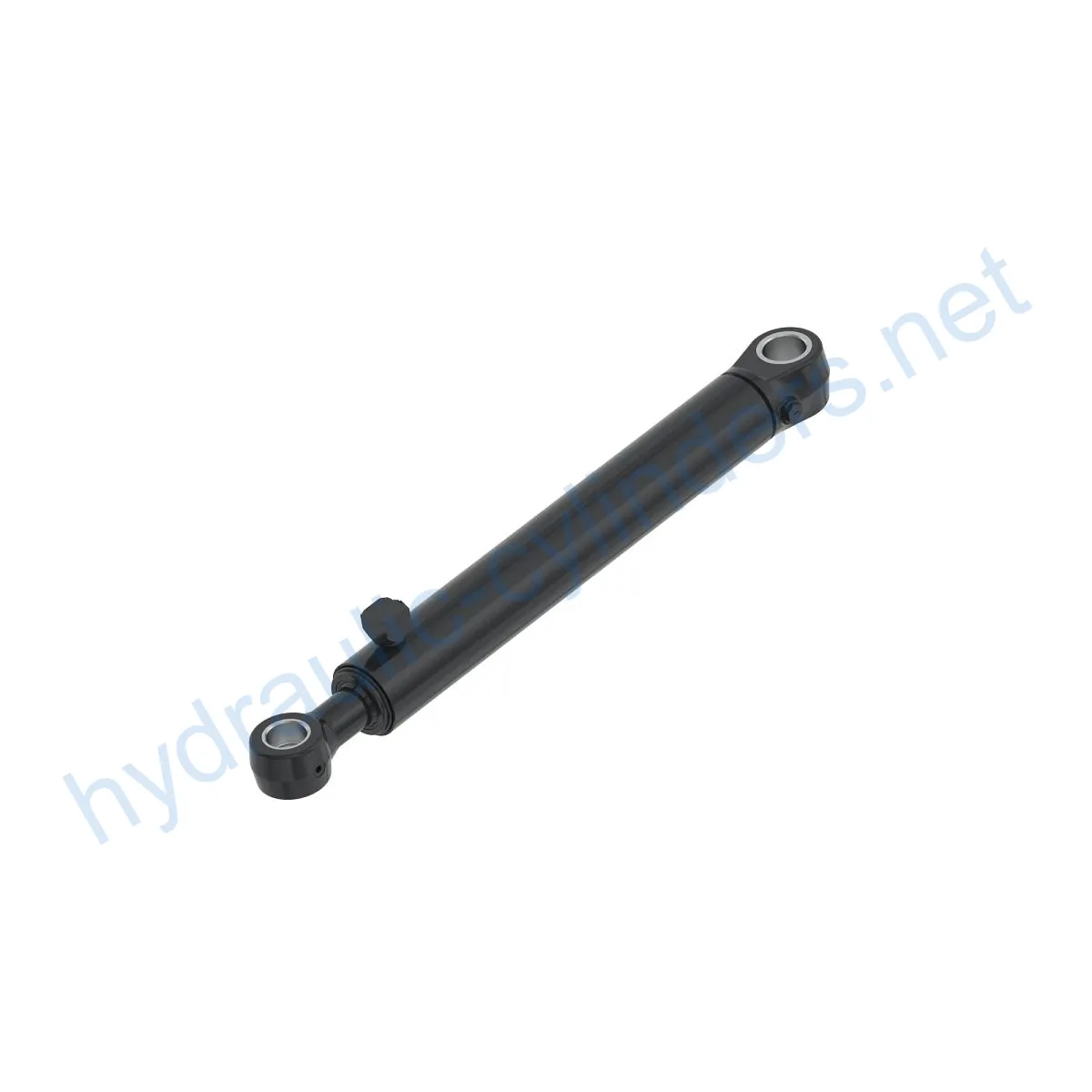Replacement Of AHC16235 Hydraulic Cylinder
Replacement Of AHC16235 Hydraulic Cylinder
The Replacement Of AHC16235 Hydraulic Cylinder is a crucial component in various hydraulic systems. Designed to provide reliable power and motion, this hydraulic cylinder plays a vital role in ensuring the smooth operation of machinery and equipment.
Specifications
- Weight: 64.02 lb
- Height: 4 in
- Width: 5.5 in
- Length: 36.2 in
Compatible Models: 643L, 643L-II, 843L, 843L-II
Features
- Improved Equipment Performance: Replacing damaged or worn hydraulic cylinders restores the normal operational capabilities of equipment, ensuring optimal performance in various applications.
- Enhanced Safety: Regularly replacing hydraulic cylinders reduces safety hazards caused by cylinder failures, ensuring the safety of operators and equipment.
- Overload Protection: New cylinder designs often incorporate better overload protection mechanisms, enhancing safety during operation.
- Quick Installation: Modern hydraulic cylinders are designed for easy installation and replacement, minimizing downtime.
- Standardized Components: Many hydraulic cylinders are standardized products, facilitating the acquisition of replacement parts in the market.
We specialize in producing replacement hydraulic cylinders that perfectly match and substitute for the original models.
Applications
- Excavators: Hydraulic cylinders in excavator arms or buckets may get damaged due to long-term usage or overloading, requiring replacement to restore proper operation.
- Cranes: Crane boom hydraulic cylinders are prone to wear during frequent lifting and lowering processes, necessitating regular replacement to ensure safety.
- Tractors: Front-end loader hydraulic cylinders in tractors may experience leaks or performance degradation during continuous lifting and tilting operations, demanding replacement.
- Harvesters: The hydraulic system in harvesters operates under high pressure, and cylinders can get damaged due to fatigue. Timely replacement is essential to maintain work efficiency.
- Automation Production Lines: Hydraulic cylinders are used to control robotic arms and other automated equipment. Cylinder failures can significantly impact production efficiency, requiring immediate replacement.
- Die Casting Machines: In high-pressure and high-temperature environments, hydraulic cylinders may experience performance degradation. Regular replacement ensures product quality.
- Mining Equipment: Hydraulic cylinders are used for lifting and moving heavy loads in mining equipment. Due to harsh working conditions, regular inspections and replacements are necessary to avoid equipment failures.
- Bulldozers: Wear of hydraulic cylinders on a bulldozer’s blade can lead to decreased pushing ability. Timely replacement maintains efficient operation.
Maintenance Tasks
- Regular Inspections: Periodically check the hydraulic cylinder for any signs of damage, leaks, or abnormal wear.
- Proper Lubrication: Ensure appropriate lubrication of the cylinder components to reduce friction and extend their lifespan.
- Seal Replacement and Calibration Checks: Replace worn-out seals and perform calibration checks to maintain optimal cylinder performance.
During installation, provide proper guidance on aligning the cylinder. It is advisable to use suitable installation brackets to secure the cylinder. We recommend following the recommended inspection, repair, and replacement procedures provided by the manufacturer. We also offer replacement parts and rebuilding services to enhance the longevity of your hydraulic cylinders.
Safety Considerations and Environmental Factors
When using hydraulic cylinders, it is essential to prioritize safety measures. Proper handling and adherence to safety guidelines minimize the risk of accidents and injuries. Additionally, considering environmental factors in the design and use of hydraulic cylinders contributes to sustainable practices and reduces environmental impact.
Troubleshooting and Common Issues
- Leakage: Check for potential causes such as damaged seals, loose connections, or excessive pressure. Replace faulty components and ensure proper sealing.
- Slow or Incomplete Operation: Inspect for clogged or damaged hydraulic lines, low fluid levels, or inadequate pressure. Clean or replace components as necessary.
- Abnormal Noise or Vibration: Investigate potential issues with misalignment, loose mounting, or worn-out components. Take corrective measures, such as realigning or tightening connections, and replace worn parts.
- Overheating: Examine hydraulic fluid levels, check for system contamination, or assess the load demands. Address the root causes, such as fluid leaks, improper fluid type, or excessive loads, to prevent overheating.
- Erratic Cylinder Movement: Inspect for potential issues like mechanical obstructions, hydraulic pressure fluctuations, or electrical malfunctions. Identify and rectify the underlying problems to restore proper cylinder function.
For effective troubleshooting and problem resolution, consider the provided tips and solutions. Additionally, suggest preventive measures to minimize potential issues and prolong the lifespan of your hydraulic cylinders.

Design Considerations and Selection Criteria
When designing hydraulic cylinders, several key factors must be considered:
- Load-Bearing Capacity: Ensure that the cylinder can handle the intended load without compromising performance or safety.
- Sealing Capability: Select appropriate sealing components, such as piston seals and rod seals, made from wear-resistant materials like polyurethane or nitrile rubber.
- Durability: Implement precise cylinder body and thread surface treatments to enhance wear resistance and prolong service life.
- Safety: Incorporate safety features and mechanisms, such as overload protection systems, to prevent potential accidents and equipment damage.
- Maintainability: Design cylinders with easy access to internal components for inspection, lubrication, and adjustment purposes, ensuring convenient maintenance.
Sealing and Lubrication
Hydraulic cylinders utilize various sealing elements to prevent fluid leakage and ensure proper operation. These include piston seals, rod seals, and wiper seals, among others. These seals are crafted from durable materials like polyurethane and nitrile rubber, capable of withstanding wear and tear. Additionally, the cylinder body and thread surfaces undergo meticulous treatment to enhance their wear resistance. Regular lubrication with appropriate hydraulic oil is necessary to ensure smooth operation and minimize friction.
Regular Inspection and Preventive Maintenance
To maintain optimal performance and extend the lifespan of hydraulic cylinders, the following maintenance tasks are recommended:
- Regular Inspections: Periodically inspect the cylinder for signs of wear, damage, or leaks. Address any issues promptly.
- Proper Lubrication: Ensure the hydraulic cylinder is adequately lubricated with the recommended hydraulic oil.
- Seal Replacement: Replace worn seals to maintain their sealing effectiveness and prevent fluid leakage.
- Calibration Checks: Perform calibration checks to ensure precise cylinder operation and alignment.
Accurate installation instructions are provided to guide the proper installation of our hydraulic cylinders. It is essential to
参观我们的 VR 工厂
通过以下方式参观我们的 VR 工厂
液压缸应用:


